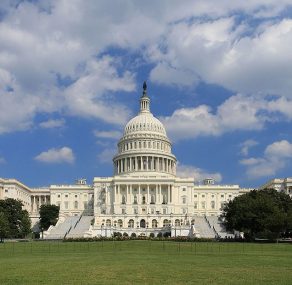Articles
All the latest articles covering the information that you will be craving to devour will be available via this category. From getting to know how indebted our company is to reading about the presidential elections; from knowing about new retirement plans to finding out how security breaches can affect your life; you can browse it all!
For more articles, visit our articles’ section.
Public Sector Retirement, LLC (‘PSR,’ ‘PSRetirement.com’ or the ‘Site’) is a news channel focusing on federal and postal retirement information. Although PSR publishes information believed to be accurate and from authors that have proclaimed themselves as experts in their given field of endeavor but PSR cannot guarantee the accuracy of any such information not can PSR independently verify such professional claims for accuracy. Expressly, PSR disclaims any liability for any inaccuracies written by authors on the Site, makes no claims to the validity of such information. By reading any information provided by June Kirby or other Authors you acknowledge that you have read and agree to be bound by the Terms of Use
Things to be Aware of Regarding Your Thrift Savings Plan
/by AdminA majority of articles about retirement planning are focusing on 401(k)s. Nonetheless, military personnel and federal employees save for their retirement in a different type of account referred to as Thrift Savings Plan or the TSP.
In a few ways, the functioning of the TSPs can be similar to that of 401(k)s. Participants make their contributions with their employer opting to match the offer. The limit for annual contribution is $18,500 and an additional $6,000 catch-up contribution to individuals aged 50 or older.
Similar to the majority of 401(k)s, TSP can provide other options that are traditional and Roth. For traditional TSP, participants can make pre-tax contributions and not pay taxes on withdrawals of your retirement money. Opting in for Roth option, contributions made are post-tax income and tax on withdrawals is not paid.
There is a possibility of having at the same time both the traditional and Roth TSP. The red flag that is interesting is prevalent since the government matching contributions can be made through traditional TSP. This means that even though you contribute to a Roth TSP, you can still own the two types of accounts and have some added tax diversification benefits.
How TSPs Performs for Different kind of Employees
There is a slight difference in individuals TSP account, and it depends on whether you are a civilian government employee or in the military:
Federal Workers
-Federal Employees Retirement System: Federal civilian employees who started working from January 1, 1984, or after all considered FERS. Those who were hired after the end of July 31, 2010, they are enrolled in a traditional TSP automatically with 3% of their basic salary deducted and deposited in their account unless they decide to change or stop making contributions. Employees in FERS that are hired prior to August 1 2010, the TSP contribution from their agency is 1%, and they can decide to contribute more.
-Civil Service Retirement System (CSRS): This particular retirement system is for federal civilian employees that were employed prior to January 1, 1984. After making a contribution to the agency, they will assist CSRS employees’ in establishing the accounts.
Military
Since 80% of uniformed military members do not serve for 20 years required to becoming eligible for a pension, majority walks away from the service without anything for retirement. Enactment of the Blended Retirement System (BRS) is hoping to change this situation. It enables individuals to choose either pension or TSP or have all of them by choosing the one with the best option depending on the current years they have served.
Any person joining the military now is automatically in the BRS. They will automatically receive 1% of their base pay contributed to TSP, and they can opt to add 4% and receive a total match of 5%. After completing 20 years of service, they will still receive a pension, but it will be reduced.
Individuals with over 12 years in the service, the pension will be a better bet since the 5% match on a TSP will not offset the higher pension they could get if they did not have TSP.
This is the point of having served for 8 to 12 years in the military. This is whether they stayed in the old system or switched to the BRS depending on their situation.
TSP Investment Choices
You can select from five index funds or various lifecycle funds that are composed of a combination of the five index funds. These types have far fewer investment options offered by majority of employers in their 401(k)s and are available to choose from a small number of options that is less confusing.
G Fund: As its name states, the Government Securities Fund are invested in U.S. government securities. This is because of its lower volatility and individuals can earn interest income without fearing to lose their principal investment.
F Fund: Fixed Income Fund investment is made in government, corporate, and bonds that are mortgage-backed with an aim to matching Bloomberg Barclays U.S. Aggregate Bond Index performance. The fund offers risk ranging from low to moderate level.
C Fund: Common Stock Index Fund is matched with S&P 500 that is composed of U.S. companies from medium to large. The fund has a moderate risk level.
S Fund: Small Capitalization Stock Index Fund is less risky since investments are made in small and medium-sized U.S. companies that are not found in the C Fund. The Dow Jones U.S. Completion Total Stock Market Index matches the fund.
I Fund: International Stock Index Fund is matched by the way MSCI EAFE (Europe, Australasia, Far East) index performs and is composed of over 20 developed stocks.
L Fund: L Fund is selected based on individual retirement time horizon, and it is the same as target-date or lifecycle funds with the funds shifting gradually from being aggressive to moderate and conservative as a person is nearing retirement. Having the retirement age in mind, individuals can select a fund that will target the closest year to when they turn to that age.
A huge TSP fund options benefit is that they entail lower expense ratios of around 40 cents for every $1,000 that is invested. This is better since a fraction of a percent rise to expense ratio of the fund will significantly lower person retirement savings in 20 or 30 years.
Not opting for an L Fund, can lead to the creation of the best combination of the other five funds. It is essential to highlight investment options you take care of and choose the one appropriate for you. It is important to be aware that default fund allocations cannot match your particular goals.
Contributions are deposited automatically into the L Fund if an individual enrolled in a TSP on or after September 5, 2015, that is targeted towards the time you turn 62 years. If enrollment were prior to this date, the contributions would be deposited to a G Fund that is not aggressive enough while having a long time horizon.
Matching Contributions
BRS members and FERS employees receive an automatic contribution of 1% to the base pay of their TSP whether they contribute or not. From this point, you can receive a match on your additional contributions reaching up to 5% of the salary.
After three years, the majority of FERS employees 1% contribution is vested with that of BRS, and a few FERS employees will be after two years. The match on these contributions does not need vesting.
Selecting Beneficiaries
It is important to choose your TSP beneficiaries and keep the list updated in case you bear children or get a divorce.
Beneficiaries will get the money if you have less than $200 or less in your TSP after passing away. Those with above $200, the money stays invested with the establishment of a beneficiary participant account in their name.
Where to Begin?
To individual’s eligible for participating in TSP, it is highly recommended to contribute enough amounts that will get 5% match.
If you qualify to a Roth IRA, you can contribute up to $5,500 per year. Following this, you can keep on taking advantage of the ability to lowering your taxable income through contributing an annual maximum of up to $18,500 to your TSP.
An individual with more money available can invest further by setting up a separate after-tax brokerage account.

Would You Keep CSRS or Switch FERS?
/by AdminThis question is not tricky, but it becomes a trick question if the government commences an open season that is special to allow a person to change their retirement plan. The question that arises is if that person will pick the old program of Civil Service Retirement System (CSRS) or the new one that replaced it in the 1980s the Federal Employees Retirement System (FERS).
Majority of feds still working up to date are all under the new FERS plan, and most of the individuals under CSRS are the federal retirees.
Asking a FERS employee this question, they usually point out CSRS plan benefits. The plan offers you a considerable starting annuity, and its cost of living adjustments are indexed fully to inflation on an annual basis. CSRS retirees get a 2.8 percent COLA. FERS retirees receive a 2.0 percent under the formula referred to as diet-COLA. This is not a huge difference, but it lowers drastically over time spent in retirement.
Asking the question to a typical CSRS employee or retiree, they will highlight some FERS super benefits. For instance, Social Security covers the employees allowing them to qualify for a government match of 5 percent to their Thrift Savings Plan accounts. Majority of people under FERS take a stride in extra investment and those that do not get it only dream of it.
Employees under CSRS contribute much more than FERS workers to their retirement plan, but those under FERS will be required to pay Social Security.
Workers under FERS get contribution matches in their TSP accounts in amounts that can be quite significant. CSRS retirees do not receive contribution matches.
If you have questions regarding your own retirement plan, make sure to reach out to a trusted financial advisor.

COLA : Keep Prorating Policy in Mind
/by AdminCOLA for retirees is most likely going to exceed the pay increases of employees that are actively working in the coming January of 2019. Some employees that are eligible for retirement are considering early retirement as they are hoping to benefit from the former rather than the latter.
The CSRS COLA percent is 2.8, and FERS COLA is 2 percent. This is for individuals that are not yet 62, with the exception of disability retirees, retired law enforcement officers, and firefighter or air traffic controllers that are eligible for COLAs. FERS survivor benefits from COLAs payments regardless of their age.
For every month that an individual was not on the retirement roll, their COLAs are lowered by 8.3 percent. Even after going through early retirement, a person that is still employed will get a small part of the upcoming COLA.
An individual is on the retirement roll under FERS the month following their retirement regardless of the day of the month of their retirement. In CSRS, a person will be on the retirement roll at the month of retirement even if they retire few days after the month started, which makes them appear on the roll in the following month. It means that to receive full payment in January, a person who is required to have retired under CSRS should have done it no later than December 3, 2017. For those retiring under FERS, they are eligible for a COLA if they retired no later than November 31, 2017.
Benefits of social security are raised in full COLA no matter how long an individual has been withdrawing their benefits.

Breaking Down the Finer Points of Discontinued Service Retirement
/by AdminThe only kind of federal retirement that isn’t considered voluntary is Discontinued Service Retirement, or DSR. An employee may become eligible for DSR if they meet the age and length of service requirements and were separated against their will, without the reasoning of “misconduct or delinquency.” The age requirements are either fifty years of age with twenty years of service, or any age with twenty-five years of service.
In either age-related instance, a minimum of five years of that service must be creditable civilian service.
The final decision of if the separation is involuntary is made by The Office of Personnel Management makes. These actions are usually considered to be involuntary:
Reduction-in-force (RIF):
Abolishment of position;
Lack of funds;
Expiration of incumbent’s term of office
Unacceptable performance (unless due to employee’s misconduct);
Transfer of function outside the commuting area
When no mobility agreement exists, reassignment outside the commuting area
Failure to consistently meet the qualification requirements of the position. This is provided the separation is non-disciplinary and the action is initiated by the agency
Separation at the time of probation as a result of failure to qualify due to performance only, which excludes misconduct
The loss of military membership or the rank that is required to hold the National Guard position, resulting in separation of a National Guard technician
Under title 5, U.S.C., Ch. 43, Subchapter II – The removal from the Senior Executive Service for poor performance.
Notice the distinction between separation due to poor job performance and separation related to misconduct. An employee who is not able to perform their duties is more likely to be eligible for DSR, while one who refuses is not.
The employee is not eligible for DSR if they decline a reasonable offer of a different position, even if an employee’s separation meets the rest of the aforementioned criteria. The reasonability of an offer is generally based upon whether the offered position is within the same agency, commuting area, the same tenure group, and within two grades of the employee’s previous position.
Much like early retirement, Discontinued Service Retirement provides for a two percent per year (1/6 of one percent per month) decrease in a CSRS retiree’s pension for each year (month) they are under the age of fifty-five. If an employee is not a special category employee, a FERS DSR retiree will not face age based decreases to their pension. They will not, however, be eligible to produce a cost-of-living increase until they have reached age sixty-two.
The employee must have received the agency’s decision for removal before the employee is considered eligible for retirement under discontinued service provisions for either unacceptable performance or disability or illness. So, if performance action were taken under 5 CFR 432, it would involve having provided the employee an opportunity to demonstrate acceptable performance during which they were not able to show improvement, followed by a proposal to remove and then notice of decision. The removal action is the cause for the employee’s retirement, so the employing agency may choose not to settle the case and remove the notice of decision to provide a clean record.

Are You Ready for Retirement?
/by Admin2018 is first approaching its end, a time in which most employees ponder whether to retire or not. Besides, other employees might consider retirement if offered the opportunity to do just that.
You need to answer the following question to know if you are ready for retirement in case you belong to this category.
Is Retirement the Right Option for You?
In response to this question, it is necessary to conducting and evaluating honestly of your present position. Given that, you need to find answers to the following key questions. First, are you enjoying what you are currently doing? If not, are you ready to quit? If so, what reasons do you have while considering your retirement? It is essential to exercise discretion before making these decisions. Preferably, you need to retire when you are ready. Avoid quitting from employment because of frustrations or disappointments with your employer or colleagues.
How Will You Finance Your Retirement?
Most importantly, assessing how you will meet your financial needs during retirement is essential. Will your retirement annuity, TSP, and any other investments sufficiently meet these needs? If the answer is no, you ought to look for ways to offset these differences. You might have minimal or deficient skills, meaning that you cannot generate some retirement income. You need to ensure that you have enough income to cover for your present and future needs.
What Do You Plan to Accomplish During Retirement?
Increased life expectancies mean that you could spend more time in retirement than you initially expected. Nowadays, most retirees set up some part-time business, engage in volunteer work, or hobbies. Then again, you might have a post-retirement plan. In case you do not have a plan, it’s high time that you develop one especially if you are married. Be aware that having a partner is an added advantage, as compared to being single.
Use the following three tips in making your retirement decision:
1. Identify whether you are ready to retire from your occupation.
2. Evaluate whether you have the necessary finances to cater for your retirement.
3. Determine how you will spend your time during retirement.

Retiring Abroad as a Federal Worker
/by AdminIn recent years, we’ve seen plenty of people asking whether their federal employee benefits will be impacted negatively after retiring and moving abroad. With this in mind, we want to discuss what actually happens!
First and foremost, we recommend taking advantage of the resources available on this topic from the likes of the State Department, the IRS, and the Social Security Administration. According to the National Active and Retired Federal Employees Association, difficulties with federal retirement benefits should only occur in a handful of countries, and this is a result of Treasury Department sanctions.
Currently, there are retired federal employees all over the world still using the Federal Employee Health Benefits Program. This being said, you should consider health care coverage because, as a general rule, Medicare doesn’t extend beyond the US. As we know in the US, different locations will suit different FEHBP plans, and this continues abroad.
Ultimately, there are various complications that can affect one’s retirement program and this includes the fact that FEHBP plans don’t necessarily cover some things that, in other countries, would be considered acceptable. Instead, the FEHBP classes them as investigational or experimental. As long as you utilize the resources provided, and ask somebody if you’re unsure, you shouldn’t have any major problems.

Federal Employees That are Waiting to Retire Until Later
/by AdminFederal employees average retirement age is continuing to rise, and in the 2017 fiscal year, it reached an average of 61.8 years. This was an increase within a half year in 2015 based on a recent report shown by OPM.
The VA and the Army are the two largest agencies with the reported increase that was nearly a full year from 63.3 and 62.3 years respectively. Other agencies that had a notably higher average age excluding some small agencies where retirement skew the numbers are Civil Rights Commission at 68.4, CFTC was 67.5, Federal Maritime Commission at 67.1 years.
Agencies that were on the lower end include the Justice at 56.2, Transportation at 59.7. The two had a large number of employees that were eligible for early retirement based on the special provision, law enforcement officers in the former scenario and air traffic controllers for the latter.
A little difference is present based on gender with an average age of 61.7 years for female and 61.9 for male. There was less difference based on race and ethnicity, but there was a substantial difference in their occupation. Clerical workers were among the latest retirees at 63.3, followed by individuals in professional occupations at 63.1. The earliest being in another category that included those under special retirement provisions at 55.4.
The reason the average age continued to increase was not delved in the report. A common voiced explanation included the desire to continuing with salary earnings for longer. Simultaneously, there was a build up for later retirement benefits and nature of most jobs demanded less physical health improvements that resulted in longer career periods.

Deciding on Retirement Survivor Annuities by Michael Wood
/by Michael WoodMichael Wood has been a licensed professional for almost 20 years, and he has focused exclusively on those consumers who are close to or already retired.
Individuals that are still married during their retirement can give a full survivor annuity for their spouse. This is unless of course a court-ordered divorce settlement has barred them or an agreement is reached with the spouse to receive a lesser amount in writing.
Under CSRS, full survivor annuity is 55 percent of your base annuity, and 50 percent under FERS. A survivor annuity that is reduced under CSRS can be in terms of a percentage of any base you elect or in a specific dollar amount. Selecting a specific dollar amount can be as low as $1 every month. Under FERS, 25 percent is the only possible reduced annuity.
Once you opt for retirement, OPM can then determine the amount your annuity is reduced by to pay for the survivor benefit. The reduction is taken from the annuity amount you are entitled to during the moment you retire before deductions such as taxes, life, and health insurance.
To CSRS retirees, OPM applies a formula to determine the reduction to be made to your annuity. The reduction under CSRS should be 2.5 percent of the first $3,600 you elect, plus another 10 percent of the amount that is above $3,600. This reduction would be less complicated under FERS. For a 50 percent survivor benefit your annuity would be reduced by 10 percent and 5 percent for a 25 percent benefit.
A majority of retirees elect a full survivor annuity for their spouses, and it is a good reason to elect a small survivor annuity rather than not have one at all. To do so can preserve entitlement of your spouse to have coverage under the Federal Employees Health Benefits program. This is unless your spouse has an entitlement to the coverage in his or her own right as federal employee or retiree. Your surviving spouse would receive an annuity that can allow them to continue with that coverage after your death.
A CSRS survivor that has an annuity that is reduced substantially would be required to pay premiums directly to OPM if they have an elected reduction that is small to cover them. Survivors from FERS are typically less likely to have problems to pay for these premiums under the reduction of 25 percent.
Survivor annuity benefits are raised by cost-of-living-adjustments on an annual basis regardless of the survivor age.
Contact Michael Wood
[email protected]

Feds Can Provide Notice of Intentions in Advance
/by AdminIllness or injury can cause a medical condition that is catastrophic at any age, potentially leading to the patient losing their ability to make the appropriate decisions. Thanks to “advance directives” you can now give directions for your medical care in advance when such instructions are to be deemed as necessary.
The availability of the documents enhances the chances of individual true wishes being respected. It will translate to avoiding medical costs that are expensive and at long last will be unnecessary. It also reduces legal costs.
Living wills that have such documents it can instruct doctors and hospitals on whether or not life-sustaining procedures will be desired.
There are health care proxies also referred to as health care power of attorney with this document. They will have the name of the agent acting on behalf of the principal if he or she is not able to make medical decisions and there exists a selection between two possible treatments.
In the proxy, language specifically authorizes that your medical information should be released to the agent you have appointed. In other instances, federal law can limit the release of such documents that will make it difficult for your agent to makeinformed decisions.
There is also affidavit for donation of organs and tissues. This is if you wish to give authorization for your organs and body parts to be removed after passing away for experimental purposes or transplant.
The provisions also apply to minors. In this case, a parent or a legal guardian acts on behalf of the children to ensure that advance directives are in place. When a child 18 years old, in most states they will be legal adults and are responsible for their own health care. Children are encouraged by their parents to execute their living wills once they come of age, but it will be up to the next generation to take action.

TSP Funds Exhibit a Major Drop in 2018
/by AdminThe first week of October was already pretty unfortunate, but the second week turned out to be even worse for Thrift Savings Plan (TSP). The running stocks in 2018 ended with the lowest performances since 2008. In 2008, the C fund ended down approximately 37% while in 2018, it finished down 4.4%.
The Dow Jones Industrial Average dropped to 5.6% in 2018 while the S&P 500 fell to 6.2%. The stock market went through a hard time in the last few months of 2018. Investors were worried about the global economy’s performance and the unraveling central bank’s easy money policies which have been in existence for the last few years.
Comparison Between TSP and Overall Averages
In 2018, the C fund in TSP dropped to 4.41%. December was a low month for the stock funds with the C funds decreasing by 9.03% and the S fund declining by 10.70%. The I fund was not better either as it dropped by 4.82%.
All the TSP stock funds declined in 2018 except for the bond funds. The G funds gave the best results with an increase of 2.91%. The L income increased by up to 0.71% while the F fund which lagged most funds for the year ended up with a vast improvement by an increase of 0.15 for 2018.
TSP Data
The number of funds in the TSP at the end of the November 2018 was more than $561. At the end of 2017, the TSP balance was over $542.
Average TSP balances
By the end of November 2018, the latest data available showed that the average TSP balance for FERS workers was $139,560 and the average balances for Roth were $12,832. By the end of 2017, the average TSP balance for the FERS workers was $138,190, and Roth balances were $11,692.
All the TSP funds decreased in 2018, but that was not something unusual after nine years running of positive returns in the C fund. Hopefully TSP investors succeed in their endeavors to increase their TSP balances and returns this year.

Can We Escape the 2019 Federal Pay Freeze?
/by AdminFor federal workers, let’s just say life under President Trump has been an interesting one. Perhaps above all else, there are concerns over the plans for a pay freeze which was announced in the 2019 budget nearly a year ago. Since the announcement, the freeze has been described in a number of different ways by various agencies and representatives, but the Federal Managers Association perhaps summed it up best as a ‘direct slap in the face.’
This being said, could we possibly escape the freeze?
In a best-case scenario, the House Democrats deal would succeed, and we would have funding for most agencies as well as an end to the government shutdown. Despite the Department of Homeland Security missing out, the package revealed by the House Speaker designate Nancy Pelosi (D-Calif) contained several bills to fund agencies.
For example, there were bills to increase wages for civilian employees and also reinstate the six appropriation bills that were so close to being finalized in Congress before the government shutdown.
Alternatively, a second package does exist, and it suggests $1.3 billion for border security and DHS funding into February. So far, the proactive approach by House Democrats has been praised, and the American Federation of Government Employees has encouraged representatives to push it through the Senate and then the President.
Call for Action
In recent weeks, the support for an alternative to the pay freeze has been requested by several parties. Not only has the AFGE requested that President Trump show his appreciation for ‘devoted federal employees,’ the National President of NARFE believes the economy will suffer after both a shutdown and a pay freeze. According to Ken Thomas, the work of the government will be undermined, and it will become extremely difficult to hire and retain high-quality employees.
In addition to this, some members have already declared their wish for a standalone legislation that would increase pay for civilian employees this year (even if it came as a provision in an omnibus spending bill). Elsewhere, as long as Congress specifies the action as retroactive, the provision could even offer a retroactive raise for employees.
Unfortunately, the government shutdown has come at a poor time for everyone; Chris Van Hollen and Ben Cardin, Maryland Democratic senators, said that retroactive pay increases were being explored before the shutdown occurred. In a letter to the President, several Democrats came together to suggest work would continue on a ‘bipartisan’ basis if President Trump doesn’t choose to change his stance on the pay freeze (to ensure a pay adjustment is received by federal workers).
Important Start to 2019
Above all else, one of the critical concerns for the government is being able to recruit and retain the best talent. Should the pay freeze come into effect, the aforementioned senators believe the public sector would be seen as the inferior choice compared to the private sector. They believe focus should now be on boosting the federal workforce considering a large portion of the existing workforce will be eligible for retirement within the next five years.
Luckily, there seems to be a bipartisan agreement for civilian employees to receive a 1.9% pay increase. Not only has it been passed by the Senate within an appropriations bill, but House Republicans have also suggested its inclusion in their final conference report for the bill; towards the end of 2018, however, the Democrats noted their skepticism.

Can You Ever Afford Retirement?
/by AdminMost people become anxious when they close in on their retirement date. However, there is no need to worry about how life will be without a steady paycheck. This is because a generous pension awaits you after your retirement. It gets better if you are under the old CSRS compared to the FERS.
In this article, we’ll focus on the numbers that you need to familiarize yourself with before you retire. These include rules and suggestions that are meant to govern our financial decisions in the future.
The Rule of 72
This rule is used to illustrate the time value of money. If someone starts saving early, they will have more money invested at retirement compared to someone who starts saving later; considering all factors are kept constant.
Take an interest rate and use it to divide the number 72. The result that you get represents the number of years that it’s going to take for the amount to double. For example, if you invest money at a 6% interest, it’s going to take 12yrs for you to have doubled the initial amount.
This rule is affected by inflation. If the rate of inflation runs at 3%, this means that in 24yrs the value of the dollar would be cut in half.
The 80% Rule
This rule suggests that by retirement, you should strive for a retirement income that is 80% of your preretirement income. This way you will be sure to have the same standard of living that you had before you retired.
The 80% rule makes an assumption that your expenses would be much less in retirement since you would have paid off your mortgage and you won’t be paying payroll taxes anymore.
The 10% Solution
This rule suggests that when you make a contribution equal to 10% of your salary, the total amount saved should be enough to sustain you after retirement.
The 4% Rule
This rule is used to determine the amount of money that one should withdraw from their retirement account every year. The 4% rule will ensure that the retiree has a steady stream of funds and still maintains a balance that will sustain them for a number of years.
This rule was developed in 1994 and shows that with an annual increase in inflation, the 4% rate is the highest withdrawal rate what was held up over a period of 3 decades.
The 100 Minus Your Age Rule
The percentage of stocks in your investment should be 100 minus your current age. When you follow this rule, you will reduce your exposure to stocks as you get older. For example, if you are 55 years of age, you should have 45% of your investment in stocks.
This rule allows you to have a higher percentage of stock in your TSP compared to if you were in the L funds. The L Income Fund is designed for members who need their money now- it’s a 20% stocks and 80% fixed income.
Conclusion
Regardless of the fact that federal employees have enviable job security, it’s advisable that they set aside some finds in an easily accessible emergency fund in preparation for retirement. An adequate amount should be an estimate of your expenses for 3 to 12 months. However, there are rules that govern reorganizations and RIFs so an advance notice should be issued in the event of changes that could potentially affect your retirement.

Favorable Tax Treatment Extension on Inherited IRAs
/by AdminIndividuals that inherit an IRA can have an extended tax deferral over their life expectancy. However, if they are sharing the inheritance, they must break out their own account on given deadlines to ensure they receive maximum tax deferral.
To divide an IRA that is inherited into different accounts for every beneficiary enables you to:
-Take distributions on your preferred schedule.
-Name successor beneficiaries of your selection.
-Follow the investment philosophy of your choice.
Furthermore, setting up a separate account for IRA beneficiaries will allow them to use their own life expectancy for the needs to calculate minimum distributions that are required. Any other way, the shorter life expectancy will be used.
For instance, if you are aged 40 years and your sister is 50 at the time you inherited an IRA jointly, it is required for you take minimum distributions over her life expectancy of 33.3 years.
Separating the IRA into two ensures you are entitled to taking small distributions over your long life expectancy, which will allow you to enjoy more tax deferral. To receive these favorable tax treatments, you will be needed to separate IRA by December 31 of the year after the passing of the IRA owner.

It Seems That Santa Didn’t Come for the TSP this Year
/by AdminThe United States stock market has been facing rough times since September, but December, in particular, has been a hard month. The S&P says it all. It has significantly fallen off the cliff. Typically, December is always a good month for marketers. It has always been the month of high yields and returns for the S&P 500 since 1928 compared to other months.
The period is referred to as the Santa Rally, and this is when stocks do best, most individuals are off work for the holidays, which makes it an excellent trading period without many news events. This is a time when buyers and sellers are feeling the holiday moods and cheer, making markets super.
This was not the case last December. Since the Great Depression, this was the worst performing December for S&P 500. Such small companies that are represented by the S&F in the TSP are now in a declining market. They have faced a more than 20% decrease in their returns. Large companies are not well off either. They are only a few points from entering the declining market territory.
The Christmas Grinch
While there are many possible reasons for selling-off, last week was a precise one. The market started in a poor state last week and began with a rally on a Wednesday. The Federal Reserve then released its long-awaited statement on Wednesday 2 pm followed by a speech by Fed Chair Jerome Powell, and after this, the markets declined utterly.
The market did not expect any severe actions to be taken, but to its surprise, the Federal Reserve declared that they would raise key interest rates to 2.50% from the current 2.25% and expect to increase it further by 0.25% in 2019. They also plan on reducing the Federal Reserve balance sheet. Fed also gave a lower 2019 real GDP prediction in the United States than expected. It was lowered to 2.3%. They foresaw that the rate of unemployment would decline from 3.7% to 3.5%.
In the end, these statements and predictions by the Federal Reserve were only an enhancement for a sell-off and not the primary cause. The truth is, even before the actions and statements, the stocks were already expensive, the economy has been in a state of expansion without recession for almost 0ten years, and there has been an increase of the government and corporate debts relative to GDP.
The Federal Reserve is regulating policy to bring in the neutral interest rates. The balance sheet is to be reduced from $4.5 trillion which was an increment from $800 billion that resulted from an increase in programs undertaken from 2008 to 2014.
Some analysts feel that FED will be making a huge mistake by raising the rates and reducing its balance sheet, especially with the slowing-down global growth while others view the actions to be quite reasonable.
People are anticipating to see how the markets will perform in 2019, but one thing remains clear, having a well-planned diversification will help reduce TSP account volatility. The bear markets, recessions, and sell-offs are a regular part of the market cycle, and there are plans to help deal with the waves and build long-term wealth.

TSP Still Open, Sends Reminder on Loans, Contributions, and Withdrawals
/by AdminFollowing the partial government shutdown, it was unclear if TSP would continue being operational or it would shut down too. It has finally spoken out and confirmed that things have not changed on their side. They are still open, but they no longer get appropriated funds. Instead, they operate on the money collected from the investors. They are now calling out regarding loans and other policies such as withdrawals and contributions for workers that were scheduled to take holiday leave.
In its statement, TSP announced that those employees in the non-pay status would not make any investments to their accounts since it would mean a deduction from their pay. Therefore, those that had been in the non-pay status for over a full pay period would not contribute to their TSP accounts during the holiday season.
The FERS coverage would continue on any employee who earned on every pay period. The coverage is calculated depending on the workers’ basic pay earned on every pay period, and the contributions made depend on the worker’s personal investment. In this case, if an employee is not earning basic pay during a specific period, she would not receive any kind of service or agency contribution for the pay period.
Good news for the account holders in non-pay status too! They can now reallocate money in their different investment funds, and they can also alter allocations of their ongoing investment. However, they can only change the allocations of investments after restarting their personal investments.
The account holders in the non-pay status have a chance to request loans, but only if the period does not exceed 30 days. They also need to fulfill some requirements to get the loan, such as agreeing to start repaying the loan through deductions on their payrolls 60 days after getting the loan.
Any worker who believes that their leave period will not exceed 30 days can comfortably sign up for the loan as it only means that they will be in a position to start repayment within the agreed period. Those with an existing loan can suspend their payments, but they need to acquire the non-pap status documentation from TSP.
What about withdrawals? Those aged 59 ½ and above can request withdrawals during the non-pay status. One can also request an in-service withdrawal if they are having financial difficulties, but there has to be proof of the hardship when applying.

CSRS Offset Annuity: The Often Misunderstood Retirement Program
/by AdminPerhaps the most misunderstood federal retirement program in the hybrid system is the CSRS Offset. CSRS Offset is mostly applied to employees that were rehired from December 31, 1983, after a break from service of over one year and had about five years of creditable service at the moment they left.
The other major group that it is applied to is composed of employees that were hired from 1984 to 1986. This was referred to as the CSRS interim period between FERS becoming effective on paper and getting launched. Individuals hired during these three years and had over five years of service by January 1, 1987 were placed under CSRO Offset during this period. On the other case, those that had fewer than five years of service were placed in FERS. It is important that this scenario was the beginning of the majority of dis-enrollments in retirement that are still discovered to this date.
CSRS Offset employees are covered by both Social Security and CSRS, and they are eligible under the two systems for retirement benefits. These benefits are coordinated to ensure the employee receives a similar amount of money for their federal services as CSRS could have exclusively covered it. The main difference is that money will be received from two varying places that are OPM and the Social Security Administration.
During retirement, the employee’s annuity will be calculated in a similar way to the regular CSRS workers. Individuals that retire before they attain 62 years will get a pure CSRS annuity. In case, they are eligible to receive Social Security benefit at 62 years there OPM will reduce or indemnify CSRS benefit by the same amount to that of Social Security earned when one is a CSRS Offset employee. The adjustments will be made when you retire at or after 62 years, and you are eligible to receive Social Security benefit.
The Offset is automatic and is given even if you have not applied for a social security benefit, and it is thus for your interest to applying for Social Security at 62 years or immediately upon retiring in case if it is after.
It is recommended to applying for Social Security benefit some few months before your 62nd birthday if you will be retiring from CSRS Offset before you are 62 years. This provides you with SSA time to processing your case and avoiding interruption that might arise in the combined benefits you are supposed to receive. In case you do not remember to do this, your CSRS annuity will still be offset. After applying for Social Security benefit, you will receive all the money you are owed by the Social Security Administration in a retroactive payment. You will also receive an added Social Security benefit you earned while you were working in other places.
To retire at 62 years or after, applying for Social Security immediately is done for a similar reason.
For individuals with less than 30 years of substantial earnings under Social Security, the benefit will be subject to windfall elimination provision. The benefit is also lowered from when you accepted to retire if a person is under full retirement age that is currently 66 years. It can be reduced further to individuals that have earned an amount that exceeds annual Social Security earnings limitation from wages or self-employment.
Contrarily, unlike the common CSRS retirees, you will not be a subject to offset provision from the government pension. This lowers or eliminates any given spousal Social Security benefit that you are entitled to get concerning your spouse’s Social Security-covered work record. You will be however only entitled to get benefits you earned on your own or from the spousal benefit and not both.
In the end, once you have retired, you will be entitled to receiving cost-of-living adjustments (COLA) that are paid to CSRS retirees in the first year and distributed based on the number of months you were on the annuity roll.

Investing Tips for the Thrift Savings Plan (TSP)
/by AdminA majority of Thrift Savings Plan participants have a plan when it comes to investment strategies. Participants require only one plan since much of their income from retirement will typically be funded by the government’s version of a 401(k) plan (also known as the TSP). The remaining income treatment is received from their FERS annuity and Social Security if they are already qualified.
An increasing number of employees and retirees made their millions through the old-fashioned manner (from the TSP). Their investment strategies entailed investing the maximum amount in an average of over 29 years during the bull and bear markets in their TSP’s C and S stock funds. During the Great Recession, the participants did not head for their G fund.
A majority of investors takes a long-view through placing most of their money in the stock market through C, S and I funds. Along the way, they may pass through bad times and hope that the market will make them profits over time. Others follow the super-safe way of putting a majority or all of their money in the stable treasury securities G fund that has low-yield. To these participants, the risk is that in a period during the retirement inflation might eat into their nest egg.
There is an increasing number of investors that are willing to take Lifecycle funds that are self-adjusting.
Over time, the investments become a lot more conservative and have less exposure to the vicissitudes of the stock market. Once the L funds are expanded the following year, they will get more popular with its fund including international companies stocks.

Incoming Changes to TRICARE Dental
/by AdminMilitary personnel who are retired and using TRICARE Retiree Dental Program (TRDP) should be expecting a few changes.
According to the federal officials, TRDP will end on December 31.
These individuals should not worry, as any person that was using TRDP this year should be eligible for the plan and be permitted to select a dental plan from the given ten dental carriers in the Federal Employees Dental and Vision Insurance Program (FEDVP).
During the 2018 federal benefits open season, individuals will be able to enroll in FEDVIP that will be running from November 12 to December 10. Coverage is expected to start on January 1 according to federal officials.
In the past, the Department of Defense beneficiaries did not access FEDVIP, but it will be there for individuals that would have been eligible for TRDP. A bonus will allow them to enroll in FEDVIP vision coverage along with the majority of family members that are active in service.
Currently, over 3.3 million people are covered by FEDVIP. These individuals can benefit from dental plans that will be offered by ten different carriers. Federal officials highlighted that to be enrolled in FEDVIP vision individuals should be enrolled in a TRICARE health plan.
Each person will decide whether one of the four vision plans will meet their family needs. Young Adults that are enrolled to TRICARE will be eligible to enroll in FEDVIP vision.
Outside of open season, individuals will only enroll in FEDVIP if experiencing a Qualifying Life Event will allow them to do this. For the entire calendar year, any election in a FEDVIP plan will remain in effect.

Cashing in on Annual Leave at Retirement
/by AdminA major reason that most of the federal employees consider retirement at the turn of the year is that it allows them to cash in the annual leave they had not used to their credit at the moment of retirement as a lump sum. This occurs even past the normal annual carryover limit, supposed they retire before the start of their new year leave.
To calculate the lump-sum payment, the agency of the employee projects all the hours of annual leave that are unused and are forwarded as if the individual is still on the rolls. The lump sum will be figured based on what they receive. Entailed in the amount will be any raises in pay that a person could have been entitled to if they stayed on the job for an equivalent period. It is essential to note that regular pay increment takes effects during the first full pay period of the year.
Carry-over limits on an annual basis are determined if an individual is a postal or non-postal worker.
Postal Service Employees that are members of the Postal Career Executive Service (PCES) receive a lump-sum payment of their unused annual leave for an unlimited amount. Those under the Executive and Administrative Scale (EAS) that is composed of supervisors, managers, postmasters and non-bargaining unit employees get their lump sum for 560 hours together with their unused annual leave at the year they retire. Clerks or letter carriers are usually covered by union contracts for organizations such as APWU and NALC, and they will get a lump-sum payment of a maximum of 440 hours.
For Non-Postal Service Members that have been employed under the level of senior executive around the U.S. or any of its territories will have the ability to accumulate and carry-over a maximum of 240 hours of their annual leave to the following year leave. On the other hand, employees from overseas can accumulate and carry over 360 maximum hours. For Senior Executive Service members they can carry over 720 hours.
For non-postal workers, leave years for all employees will start on the first day of the first paying period in a calendar year for 2019-leave year it will start on January 6, 2019, for all the postal staffs and the day prior to the postal employees.

Plans on Reversing Retirement Contribution Boost
/by AdminThe Democratic control of the House is commencing next year, and with this, there is a planned bid which is meant to help in overturning the increment in retirement contributions for FERS workers, which was passed in 2012 and 2013. These laws resulted in FERS workers paying different levels of contributions to the civil service portion of their annuities based on the time when they were hired.
The workers hired before 2013 paid 0.8% while those hired in 2013 paid 3.1% and those employed in 2014 on the other hand pay 4.4%. These contributions are not included in the 6.2% social security deduction under FERS.
However, regardless of their level of contribution, the benefit of the plan works the same. The firefighters, law enforcement officers, and air traffic pay 0.5% more than other federal services providers across every case, but they receive enhanced benefits.
This increase was brought about by the Republicans in Congress who argued that workers share of financing federal retirement benefits should be added and the government’s shared to be decreased to balance the two. Even after the changes, the Republicans have been pushing for a further rise in the workers’ share but have not succeeded regardless of their constant control of the Congress and the White House for the past two years.
The federal employees’ unions were confident that the Democrats would win on at least one of the Congress chambers, and therefore, prior to the election, they met with the Congressional Democrats and pleaded for a reverse on those increases. They hoped that their plea would be treated as a priority first thing after the Democrats commence work in that office.
A law which required a half percentage point increase in contributions for both FERS AND CSRS employees was enacted during the Clinton administration. This was a time when Republicans had control over Congress. The first two steps of the increment process were carried out, but instead of moving on to the third step, the whole increase idea was revoked, and the contributions reversed to their traditional or standard level.
The retract however came at a point where the government was at a good financial view such that a minor surplus compares to the future expected deficits which are already approaching $1 trillion. The federal workers’ rights which are set by the law are hard to make without the Congress intervention, and this is why the workers union hopes that the Congress will keep this to consideration.









